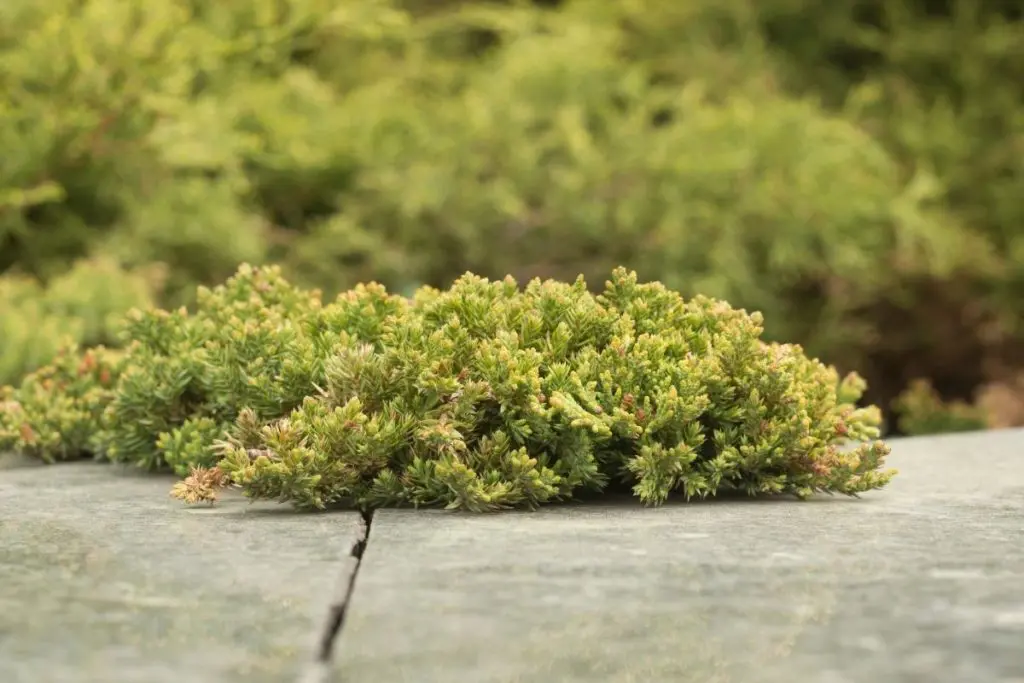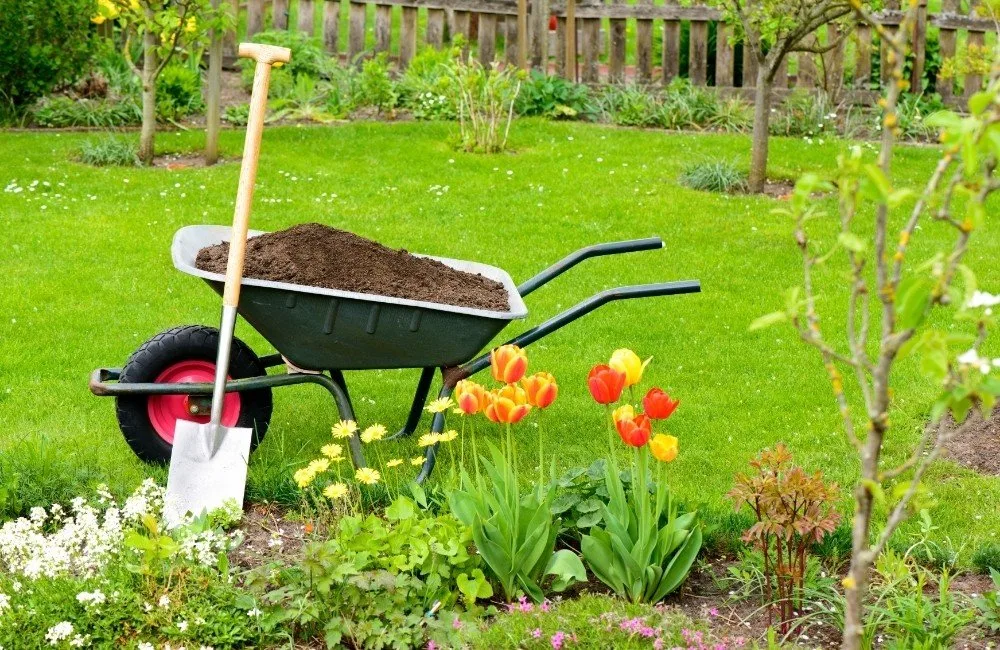Would a weed by another name be nearly as annoying? As any experienced gardener knows, the answer to that question is — yes! Learning how to keep weeds out of gardens is crucial to actually being able to enjoy said gardens.
But what exactly is a weed? While it’s possible to simply know ‘em when you see ‘em, if what’s sprouted in your vegetable garden bed is unwanted, sapping crucial nutrients and water in the soil from the vegetables or flower you do want, it’s a weed — and it’s gotta go. And even if you’re not growing veggies, weeds can be unsightly, popping up in wildflower and rock gardens, or simply in your nice green grass — what a nuisance!
Without any herbicide, weedkiller, or chemicals, here are the 8 best ways to keep weeds out of gardens naturally.
Starting Out Right
What is the best way to keep weeds out of my vegetable garden? Keeping reading, because you’re about to find out.
Don’t Over-Cultivate Your Garden Beds
Look closely at the soil in your vegetable garden — it’s full of weed seeds, just waiting to germinate. Don’t let that keep you up at night, though, because really, the weed seeds in the soil deeper than a few inches will never get enough air and sunlight to grow.
Over-tilling or over-cultivating your garden by hand will churn up those seeds, however, giving those weeds a chance to sprout. Remember, you really need to till up your garden beds only once a year, ideally in the spring, and if you’ve had your beds covered all winter, you may not need to till the soil at all.
Follow these simple pointer for best results when tilling:
- Don’t till when the soil is damp — the top 8 inches or so should be dry
- Use plenty of compost, especially if your soil is clumping
And last, if at all possible, always till your garden beds by hand. Wheels can further compact your soil, making a less hospitable environment for the plants you actually want to grow.
Use Plenty of Mulch

Not only is mulch full of nutrients helping your vegetables and flowers grow, it also creates a nice barrier in your soil, blocking sunlight, air, and water from permeating too deep, reaching those pesky weed seeds and encouraging them to grow. Proper mulching is also a great way to keep weeds and grass out of your rock or wildflower garden beds as well,
When using mulch as a weed barrier, lay down at a least two to three inches. And remember, mulch can take many forms, such as:
- Bark mulch
- Straw
- Pebbles
Or even grass clippings. Just don’t put too much mulch over where you have planted the seeds you want to grow because mulch will also starve those seeds of sunlight, water, and oxygen. And that’s no bueno.
Block Planting
You plant plants in rows, right? Wrong. Perhaps the best way to keep weeds out of your vegetable garden is to plant using block spacing. Here’s how:
- Make a grid across your soil using string or small pieces of wood. The size of the grid is entirely up to you.
- Plant the seeds. Before doing so, check the recommended spacing for whatever plant it is that you’re planting. Also, depending on what it is you’re planting, you may be able to plant more than one thing within each grid.
Almost any kind of vegetable prospers in a block-spacing environment. Except, perhaps, perennials like artichokes, which tend to need more spacing than other kinds of vegetables. Here are some additional tips for block planting:
- Plant “companion plants” in the same area of the grid, or plants that could prove beneficial to each other when growing near one another — this can take some research.
- If you’re planting taller plants alongside smaller vegetables requiring a lot of extra sunlight, be sure to plant the taller plants on the north side of the bed. That way they won’t cast as many shadows.
- Planting naturally pest-repellent plants like onions, garlic, and leeks? Put them around the edges to help keep out the creepy-crawlies.
Water Carefully
Rather than spraying water indiscriminately all over your vegetable or flower garden beds, giving unwelcome visitors a drink just as much as the friendly plants you’d like to grow, stay away from sprinklers, watering cans, or even a hose, and use a soaker hose instead.
Targeting the water just where you want it, and nowhere else, put the soaker hose as close as possible to the base of the plant you’re watering, or where you’ve planted the seeds. This will keep the water where you want it, and help prevent it from soaking anywhere it doesn’t belong.
Plant Ground Cover

Another effective way to keep weeds and grass out of flower beds and rock or vegetable gardens is to plant ground cover. When done strategically, like in the areas where you have block planted, groundcover prevents sunlight, water, and oxygen from reaching those persistent weed and grass seeds buried below.
Perennial ground cover, like creeping thyme, will also do its duty year-round while your vegetable and flower have gone dormant for the winter.
In addition to creeping thyme, here are some other examples of groundcover to plant in order to keep grass and weeds out of your garden:
1
Creeping Juniper
This tough and hearty ground cover grows anywhere and once established, produces a dense mat of pretty green barrier impervious to weeds. Creeping juniper does need a lot of sunshine, however.
2
Dead Nettle
In some parts of the world you may not need to plant dead nettle at all, but simply wait for it to pop up on its own, especially in the early spring and summer. Blossoming pink, purple, and white, dead nettle makes a dense and impervious layer that most weeds stand no chance of breaking through. Dead nettle does prefer shade, but some sunshine is okay. Side note, it also makes for a great cup of tea.
3
Aronia
Another thick and hearty ground cover to consider planting to keep weeds out of your rock or flower garden is aronia. Low-growing with pretty white flowers and richly green foliage, aronia is hedge-like once grown, thriving in full sun and almost any kind of soil.
Suffocate Them
Ok, this next one sounds a bit harsh, but sometimes the best way to keep weeds out of vegetable, rock, and flower gardens is to suffocate them. Commercial weed barriers work well for this purpose—just cut some holes in the barrier to plant the vegetables and flowers where you want them planted.
Otherwise, here are some ways to suffocate those weeds before they even have a chance to grow. And best of all, it’s stuff you may already have laying around your house:
Newspaper or Cardboard
After you’ve cleared your beds of weeds in the early spring, spread a layer of newspaper around the beds. Make sure the layer of newspaper is about 10 pages thick, and be sure to overlap the newspaper, so weeds don’t grow through the cracks.
One finished, spread mulch, pebbles, or potting soil over the newspaper or cardboard, but just enough to cover it. Then, water the newspaper daily—unless you live in a rainy climate. Eventually, the newspaper will turn to mulch and in doing so, smother any weeds that may be growing underneath. This approach is pretty much the same with cardboard.
You can also try this method with black or clear plastic, but the plastic won’t decompose naturally like paper and cardboard.
Spray Them With Vinegar
Though there’s some disagreement about how effective this approach may be, spraying a mixture of vinegar, dish soap, salt, and water on weeds is another way to keep weeds out of your garden naturally.
Here’s what you need to try this approach:
- White vinegar
- Dish soap
- Salt
- Spray bottle
Then, mix about 1-gallon of white vinegar, 1-cup of salt, and about 1-tablespoon liquid dish soap in the bottle and spray away.
The salt and vinegar draw moisture from the leaves of the plant, and the dish soap helps keep the mixture on the surface of the plant where it’s most effective. Some caution against the method however, mentioning it’s not very effective against perennial weeds, and that too much salt can throw the soil out of balance.
Pro Tip:
Always use salt sparingly when it comes to your garden. Its best use is with stone walkways to avoid mixing with your soil and damaging your plants.
Pull Them

We’re sorry to say, sometimes the only way to keep weeds out of your garden is to pull them. Once pulled, though, many people eat the weeds (more on that a bit later one, and we don’t recommend doing so until you’re certain whatever weed you’re pulling is edible).
However, the last thing you want is to break your back pulling weeds from your flower garden, only to have them sprout up again, seemingly sometimes within a matter of hours.
Here’s How to Pull Those Weeds and Keep Them Gone for Good:
- Get ‘em while they’re young and tender. Once fully grown, their roots become more established, making them more difficult to pull out of the ground. Also, once the weeds have grown beyond a certain point, the roots may become entangled with the plants you want in your flower or vegetable garden.
- Grab them by the base. While weeding, it’s important to grab as close to the base as possible. Then, take your time. Pull slowly to try and get as much of the root as possible, and ideally, all of it. Otherwise, with roots left in the ground, those weeds are just going to come back, and you’ll have to do it all over again.
In addition to these tips, don’t be afraid to use a tool like a long-handled hoe, rake, or a grip-and-pull weeder to dig those unwelcome guests out of your garden beds.
Once your weeds are pulled, you may not want to throw them in the compost. Some weed seeds are so tenacious, they’ll sprout right there in the compost, or be carried in the wind right back to where they started.
Furthermore, if you’ve pulled any of the following weeds from your yard or garden, among many others, you may just want to add them to your next meal:
- Comfrey
- Winter Cress
- Common Mallow
- Purslane
- Chickweed
And, of course, there’s the dandelion, the blooms of which are such a versatile food source, they at one time weren’t considered a weed at all.
Final Grounds
Got unwelcome intruders in your flower, vegetable, or rock garden? In this article, we covered 8 of the best ways to keeps those weeds out of your garden, naturally and without any chemicals or weedkiller:
- Don’t over cultivate or till
- Use plenty of mulch
- Block planting
- Watering carefully
- Planting ground cover
- Suffocating them
- Spraying them with vinegar
- Pulling them
Controlling weeds takes hard work and persistence. Follow these simple guidelines, however, and your garden really can be grass and weed-free. Good luck, and we’ll see you in the garden.
Further Reading






